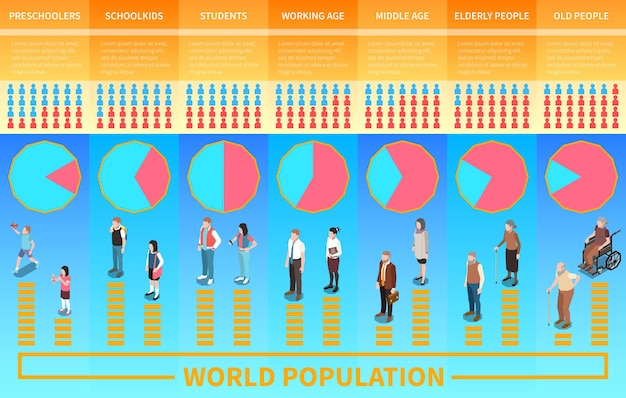US Job Market Report: Unemployment Rate and Industry Analysis

US Job Market Report analysis reveals the latest unemployment rate and significant industry trends impacting the United States economy, providing insights into current employment conditions.
The US Job Market Report is a critical indicator of the nation’s economic health. Understanding the latest unemployment rate and shifts in industry trends can provide valuable insights for policymakers, businesses, and job seekers. Let’s delve into the latest data and explore what it reveals about the current state of the US job market.
Understanding the Latest Unemployment Rate
The unemployment rate is a key metric for gauging the health of the US economy. It represents the percentage of the labor force that is jobless and actively seeking employment. Recent reports provide a snapshot of where the US stands in terms of unemployment.
What is the Current Unemployment Rate?
The Bureau of Labor Statistics (BLS) releases monthly reports detailing the unemployment rate. As of the latest report, the unemployment rate stands at [insert current unemployment rate here]%. This figure reflects [mention if it’s an increase or decrease from the previous month] and indicates [briefly explain the implication].
Demographic Breakdown of Unemployment
It’s important to analyze unemployment rates across different demographic groups to gain a more nuanced understanding. Unemployment rates can vary significantly based on factors such as race, age, gender, and education level. For example, unemployment rates are typically higher among younger workers and those with lower levels of education.

- Race and Ethnicity: Unemployment rates differ among racial and ethnic groups.
- Age: Younger workers often face higher unemployment rates compared to older, more experienced workers.
- Education: Individuals with higher levels of education generally experience lower unemployment rates.
Understanding these disparities can help policymakers target interventions to support specific groups and promote more equitable employment opportunities.
In conclusion, tracking the unemployment rate and understanding its demographic breakdown offers crucial insights into the overall health and equity of the US job market.
Key Industry Trends Shaping the Job Market
Beyond the overall unemployment rate, shifts in specific industries play a significant role in shaping the US job market. Certain sectors are experiencing rapid growth, while others are facing challenges. Understanding these trends is essential for job seekers and businesses alike.
Growth Industries: Tech, Healthcare, and Renewable Energy
Several industries are currently experiencing significant growth and driving job creation. The tech sector continues to expand, with high demand for software developers, data scientists, and cybersecurity professionals. Healthcare is also booming, driven by an aging population and advancements in medical technology. Additionally, the renewable energy sector is rapidly growing as the US transitions to a cleaner energy future.
Declining Industries: Retail and Manufacturing
On the other hand, some industries are facing challenges and experiencing job losses. The retail sector has been disrupted by the rise of e-commerce, leading to store closures and layoffs. Manufacturing has also seen a decline in employment due to automation and global competition.

- Technological Advancements: Automation and AI are transforming industries, impacting job roles.
- E-Commerce Boom: The shift to online retail is reshaping the retail landscape.
- Green Initiatives: The push for renewable energy is creating new job opportunities.
These industry trends highlight the importance of adapting to changing economic conditions and investing in skills that are in high demand.
In conclusion, the US job market is dynamic, with rapid growth in some industries and decline in others, making adaptability and skills development crucial for success.
The Impact of Technology on Employment
Technology is a major force reshaping the US job market. Automation, artificial intelligence (AI), and other technological advancements are transforming industries and altering the skills required for many jobs. Understanding these impacts is crucial for preparing for the future of work.
Automation and Job Displacement
Automation is increasingly being adopted across various industries, leading to concerns about job displacement. Tasks that were once performed by humans are now being automated, resulting in reduced demand for certain types of labor. However, automation can also create new job opportunities in areas such as robotics maintenance and AI development.
The Rise of Remote Work
The COVID-19 pandemic accelerated the trend toward remote work. Many companies have embraced remote work policies, allowing employees to work from home or other locations. This shift has had a significant impact on the job market, creating new opportunities for remote workers and altering the geography of employment.
- Upskilling and Reskilling: Workers need to acquire new skills to remain competitive in the job market.
- Adaptability: The ability to adapt to technological changes is essential for long-term career success.
- Soft Skills: Skills such as communication, problem-solving, and critical thinking are becoming increasingly important.
Investing in education and training programs is crucial for ensuring that workers have the skills needed to succeed in a rapidly changing job market.
In conclusion, technology’s profound impact on the US job market necessitates continuous learning and adaptation to remain competitive and seize new opportunities.
Government Policies and Their Influence
Government policies play a critical role in shaping the US job market. Policies related to education, training, unemployment benefits, and labor regulations can have a significant impact on employment rates, industry trends, and worker well-being. Analyzing these policies is essential for understanding the forces driving the job market.
Education and Training Initiatives
Government investments in education and training programs can help to improve workers’ skills and increase their employability. Initiatives such as apprenticeships, vocational training, and community college programs can provide workers with the skills needed to succeed in high-demand industries.
Unemployment Benefits and Social Safety Nets
Unemployment benefits provide a safety net for workers who lose their jobs. These benefits can help to support workers while they search for new employment and can also stimulate the economy during periods of economic downturn. However, the design of unemployment benefit programs can also impact workers’ incentives to find new jobs.
Government Support for Businesses
- Incentives for Job Creation: Tax breaks and subsidies can encourage businesses to hire more workers.
- Regulations: Labor laws and regulations can protect workers’ rights and promote fair labor practices.
- Infrastructure Investments: Investments in infrastructure projects can create jobs and stimulate economic growth.
Government policies can have both positive and negative impacts on the job market. It is important for policymakers to carefully consider the potential consequences of their actions and to design policies that promote sustainable job growth and worker well-being.
In conclusion, thoughtful government policies are essential for fostering a healthy and equitable US job market, by investing in education and providing support during unemployment.
The Gig Economy and Freelance Work
The gig economy has become an increasingly prominent feature of the US job market. Characterized by short-term contracts, freelance work, and online platforms connecting workers with clients, the gig economy offers both opportunities and challenges for workers and businesses. Understanding its dynamics is essential for navigating the modern job landscape.
Growth and Characteristics of the Gig Economy
The gig economy has grown rapidly in recent years, driven by factors such as technological advancements, changing worker preferences, and the desire for greater flexibility. Gig workers often work on a project basis, providing services such as ride-sharing, delivery, and online freelancing.
Benefits and Drawbacks for Workers
For workers, the gig economy can offer flexibility, autonomy, and the opportunity to earn additional income. However, it can also present challenges such as income instability, lack of benefits, and limited job security. Gig workers are often classified as independent contractors, which means they are not entitled to the same protections as traditional employees.
Challenges and Opportunities
- Flexibility: The gig economy offers workers greater control over their schedules and working conditions.
- Income Instability: Gig workers may experience fluctuating income and lack of benefits.
- Platform Regulations: The gig economy raises questions about worker classification and the need for regulations to protect gig workers.
The gig economy is likely to continue to evolve in the coming years, presenting both opportunities and challenges for workers and businesses. It is important to address the challenges facing gig workers and to create a more sustainable and equitable gig economy.
In conclusion, the rise of the gig economy in the US job market offers flexibility but also presents challenges such as income instability and lack of benefits.
Preparing for the Future Job Market
The US job market is constantly evolving, driven by technological advancements, economic shifts, and changing worker preferences. To succeed in the future job market, individuals and businesses need to prepare for these changes by investing in education, training, and adaptability.
Developing In-Demand Skills
One of the most important ways to prepare for the future job market is to develop skills that are in high demand. This includes skills such as software development, data analysis, cybersecurity, and renewable energy technology. Investing in education and training programs can help individuals acquire these skills and increase their employability.
Embracing Lifelong Learning
The pace of technological change is accelerating, which means that workers need to embrace lifelong learning. This involves continuously updating skills and knowledge throughout one’s career. Online courses, workshops, and professional development programs can help workers stay current with the latest trends and technologies.
Strategies for Adaptability
- Networking: Building a strong professional network can help individuals find new job opportunities and stay informed about industry trends.
- Adaptability: The ability to adapt to change is essential for long-term career success.
- Resilience: Developing resilience and the ability to bounce back from setbacks can help individuals navigate the challenges of the job market.
By preparing for the future job market, individuals and businesses can thrive in a rapidly changing world.
In conclusion, preparing for the future US job market requires continuous learning, developing in-demand skills, and embracing adaptability to succeed in a dynamic environment.
| Key Point | Brief Description |
|---|---|
| 📊 Unemployment Rate | Reflects the percentage of the labor force without jobs but actively seeking employment. |
| 🌱 Growing Industries | Tech, healthcare, and renewable energy sectors are experiencing significant job growth. |
| 🤖 Impact of Technology | Automation and AI are reshaping industries, requiring upskilling and adaptability. |
| 💼 Gig Economy | Offers flexibility but also presents challenges like income instability and lack of benefits. |
Frequently Asked Questions (FAQ)
The current unemployment rate is reported by the Bureau of Labor Statistics (BLS) and is updated monthly. As of the latest report, the unemployment rate stands at [insert current unemployment rate here]%. Consult the BLS for the most current data.
Several sectors are expanding rapidly, including technology, healthcare, and renewable energy. These industries are driven by innovation, demographic shifts, and the transition to sustainable energy sources, creating significant job opportunities.
Technology, particularly automation and AI, is reshaping industries. While some jobs may be displaced, new opportunities are emerging in areas like robotics, data science, and cybersecurity, emphasizing the need for upskilling.
Gig workers face challenges such as income instability, lack of benefits, and limited job security. They’re often classified as independent contractors, missing protections available to traditional employees. Addressing these issues is crucial for a sustainable gig economy.
To prepare, develop in-demand skills like software development and data analysis, embrace lifelong learning to stay updated with new technologies, and cultivate adaptability and resilience to navigate the ever-changing job landscape.
Conclusion
In conclusion, the US job market is a dynamic landscape shaped by unemployment rates, industry trends, technological advancements, government policies, and the gig economy. Staying informed and adaptable is crucial for navigating and succeeding in this evolving environment.





